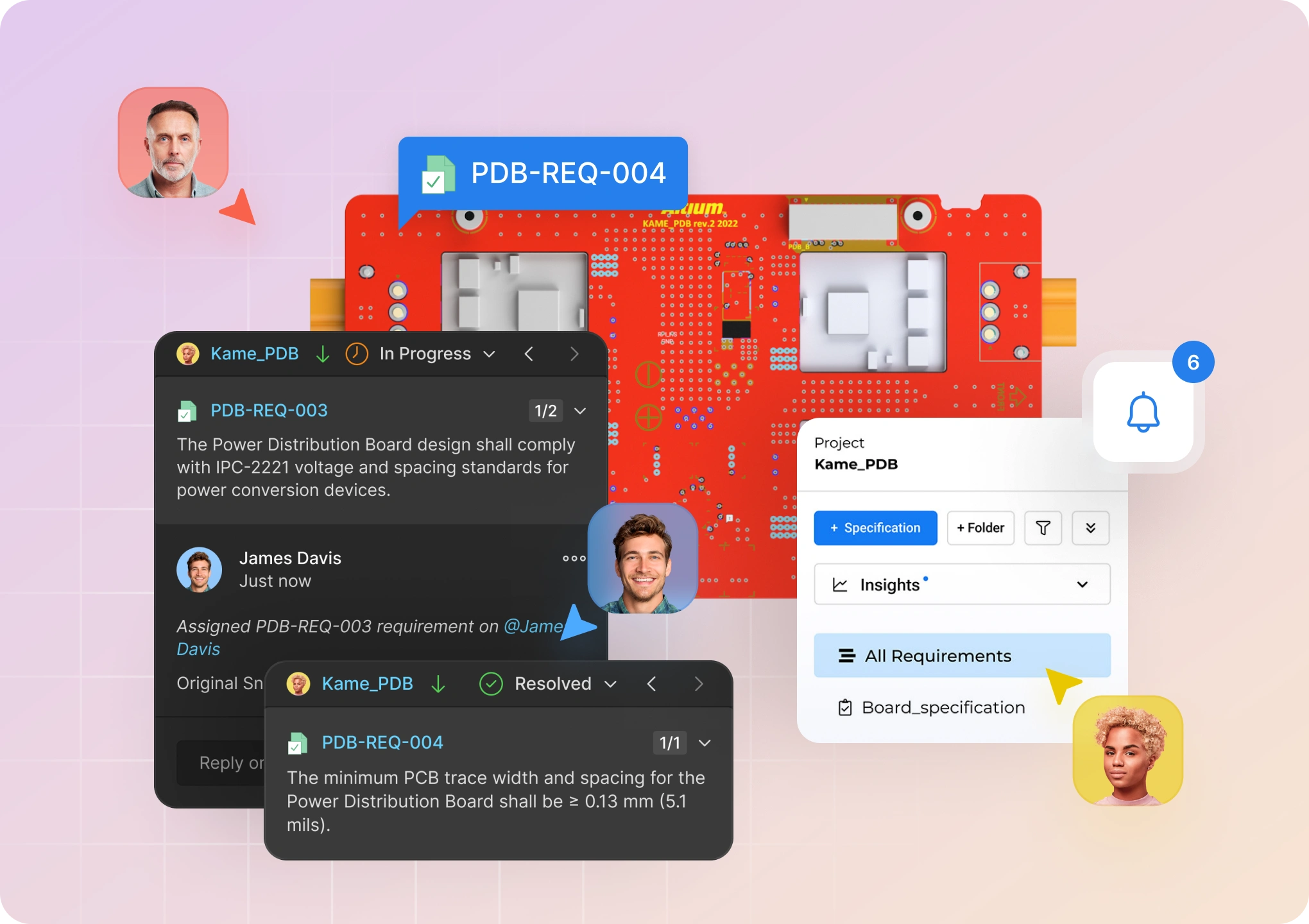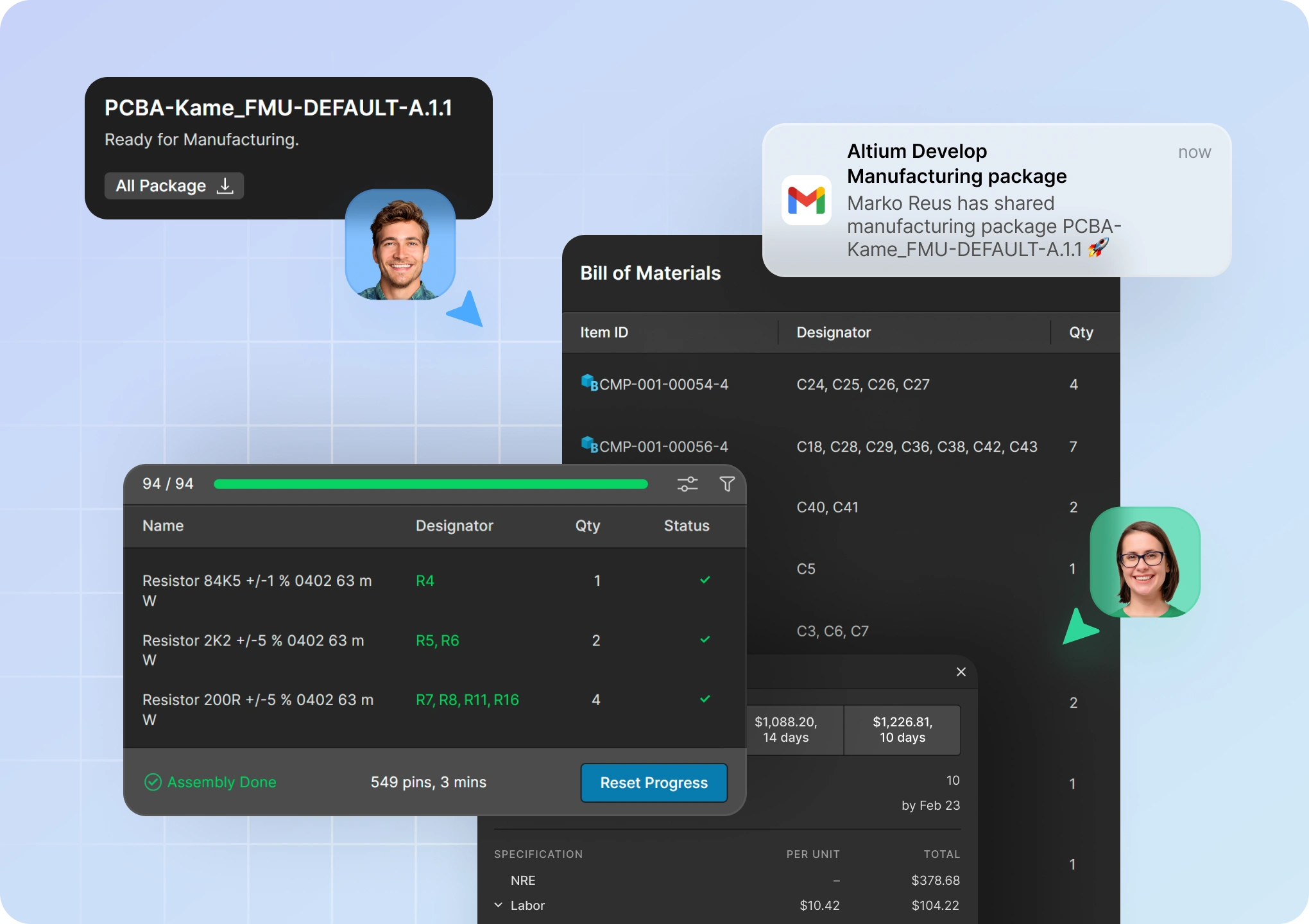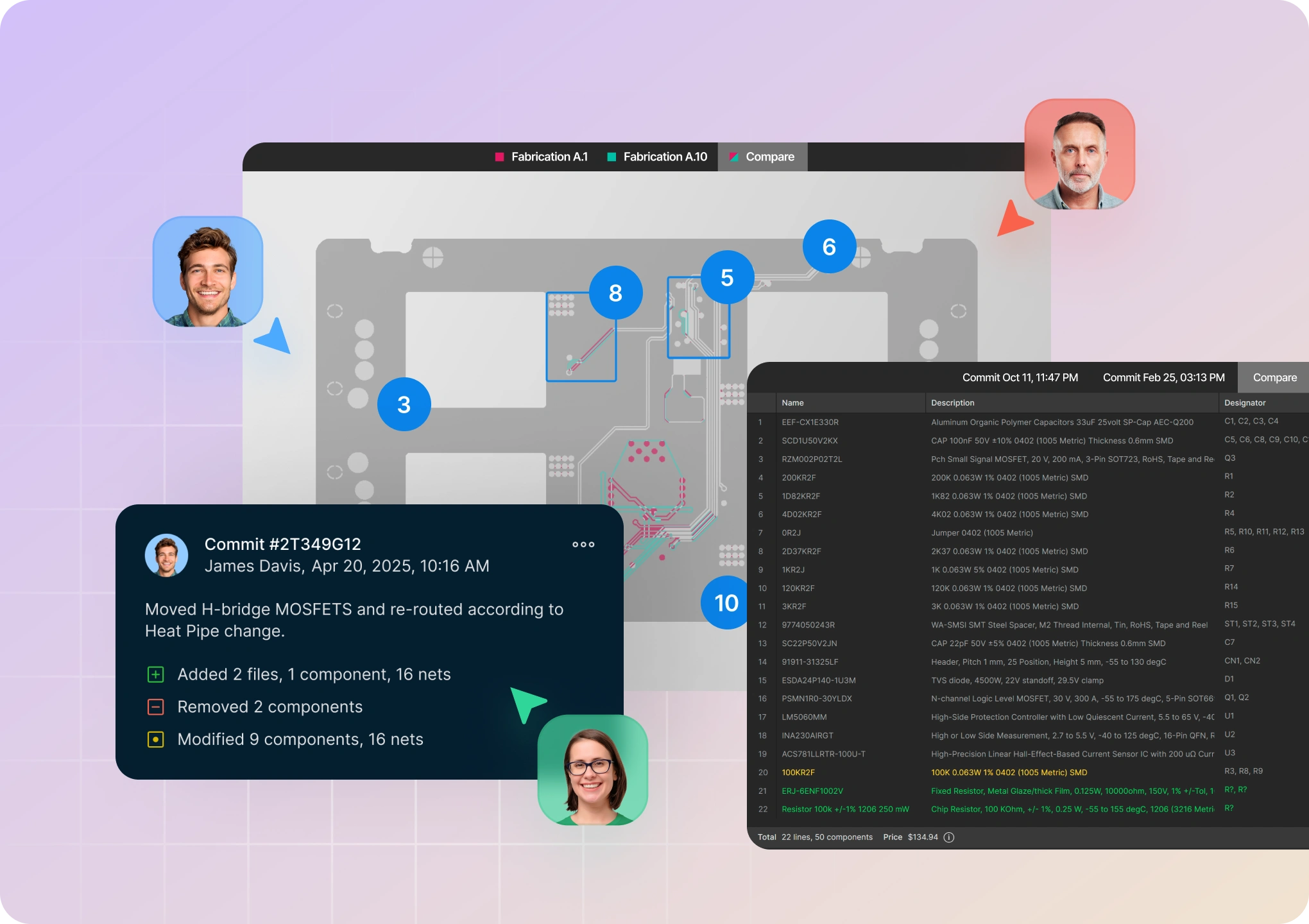
Everything you need to design, source, align, and deliver great products.
Unified in one engineer-focused platform without the enterprise complexity or price.
Free 30-day access. No credit card required.
Are You A Student? Enroll in the Student Lab
Product Co-Creation without Boundaries
Free from silos, free from limits.
Where working together becomes working as one.

Continuous Insight
Insight that’s there for you
when you need it.
Every change, comment, and decision lives in real-time context, giving you and your collaborators the visibility to stay aligned—without the need for formal check-ins. Insight flows as work happens, so you're always informed to make your best decisions.

Unlimited Co-Creation
Unify every discipline—on
your terms.
Enable true multidisciplinary co-creation, not by enforcing structure, but by empowering freedom. Electrical, mechanical, software, sourcing, and manufacturing—every discipline connects in a shared environment that aligns data, context, and purpose. Work together concurrently, not just in parallel.

Peer-Powered Network
Invite anyone. Work
without barriers.
Build on a peer-powered network that gives you the freedom to bring the right people into the process—whenever, wherever, and however you need them. It’s an environment where freedom and flexibility converge, anchored by shared purpose, to deliver truly limitless power to create.
Co-Create
with Shared Data, Shared Context and Shared Purpose
Design
Electronics projects have revolved around PCB designs. Electrical, mechanical, simulation or software engineers focused on completing their specific tasks. Non-engineers purchase parts, track requirements, or manage the project. Almost nobody has full visibility into design artifacts, and projects lacking that inevitably become manual, disconnected, and fraught with friction.
With Altium Develop:
- Design with Altium Designer, the industry-leading PCB software
- Multidisciplinary product development becomes company culture
- Invite unlimited collaborators to see designs & give feedback
Project
Everyone working on an electronics product deserves visibility. But with data scattered across tools and systems, team members lack the context they need. Electrical engineers miss requirements, purchasers can’t match designs to BOMs, and mechanical engineers guess at board placement. Limited project visibility makes it hard for experts to do their best work.
With Altium Develop:
- Functional experts become co-creators with shared purpose
- Real-time project updates replace manual check-ins and file transfers
- Built-in comments, tasks, and free collaboration dissolves barriers
Requirements
To develop electronics while working together as one, everyone needs to understand requirements for the system–both electronic and otherwise. Unfortunately, not everyone has time to sift through a long list to find the functional, performance, compliance, environmental or integration requirements that they need to guide their individual contributions.
With Altium Develop:
- Requirements display contextually in universally visible design files
- Team members focus on the requirements relevant to them
- Managers see progress or can drill down to validate requirements
Supply Chain
Managing BOMs and sourcing parts requires unconstrained coordination between engineering, procurement, and the whole team. In a world of rising tariffs, it's even more important that many eyes watch changes in designs, component price increases, or declining inventory levels. That shared vigilance can save promising products from becoming costly mistakes.
With Altium Develop:
- Clearly reveal supply chain dependencies in PCB designs & schematics
- See component pricing, availability, and lifecycle status in context
- Swiftly evaluate alternative parts and assess trade-offs as a team
Manufacturing
Operational silos within any multidisciplinary team can hinder manufacturing readiness. Manufacturing engineers or contract manufacturers are the experts on avoiding manufacturing challenges. They’ve seen them many times before. And yet, they don’t have upstream visibility to flag issues early. By the time they see designs, issues may be too late or too costly to fix.
With Altium Develop:
- Build prototypes from design files, in direct connection with engineers
- Manufacturing engineers provide early feedback to designers
- Designers invite in-house and contract manufacturers to comment
Data
Data is knowledge and knowledge is power. Too many product development teams think only about making products, and they leave producing great data as an afterthought. Imagine electronics development data freely shared with collaborators who enrich it as they participate. Collaboration changes into co-creation when everyone can share anything with their colleagues.
With Altium Develop:
- Unlimited data sharing to erase blind spots and improve decisions
- Treat producing quality data as a core objective, not as an afterthought
- Network effects transform collaboration into boundless co-creation
Frequently Asked Questions
Altium Develop is an easy-to-start, easy-to-use, and easy-to-collaborate platform built for individual engineers and small teams who want professional-grade PCB design without enterprise overhead.
It includes the full Altium Designer ECAD environment and the Altium 365 cloud platform, along with integrated cloud applications for sourcing intelligence, MCAD collaboration, and lightweight requirements management — all optimized for speed, autonomy, and simplicity.
Altium Develop is designed specifically for:
- Individual engineers and consultants
- Startups and small product teams
- Lean organizations that value speed, clarity, and flexibility
- Teams that rely on fast iteration and direct collaboration without formal workflows
If your team works primarily in ECAD and collaborates across disciplines without heavy process, compliance, or governance requirements, Develop is the right fit.
It reflects the way small teams naturally work; fast, flexible, and unconstrained.
Individuals and small teams choose Altium Develop when they want tools that are:
- Easy-to start: Fast setup with minimal administration
- Easy-to use: Unified design and cloud collaboration with no extra complexity
- Easy-to share: Real-time reviews, comments, and manufacturing feedback
- Easy-to trust: Everyone sees the same source of truth, reducing errors and rework
Use Altium Develop if you want your team to:
- See up-to-date design data in one place
- Review and collaborate directly on the design rather than through fragmented channels
- Share BOMs, sourcing data, requirements, and mechanical updates without manual coordination
- Reduce mistakes caused by disconnected tools or version mix-ups
Altium Develop helps lean teams work the way they prefer: fast, autonomous, and together.
Altium Develop uses a simple, transparent subscription model designed to be easy to understand and easy to buy. Pricing reflects only what smaller teams need, without the governance required by large enterprises.
You can see the current pricing on the Altium Develop pricing page, and teams can also try Altium Develop free for 30 days.
Getting started is intentionally easy-to:
- Create your Altium Develop account.
- Install Altium Designer.
- Invite teammates to your workspace.
- Begin designing, sharing, and collaborating immediately.
Your team can now:
- Share designs and review feedback in real time
- Track project history and tasks in context
- Collaborate across disciplines with MCAD CoDesigner or BOM Portal
- Use integrated cloud applications without extra setup





